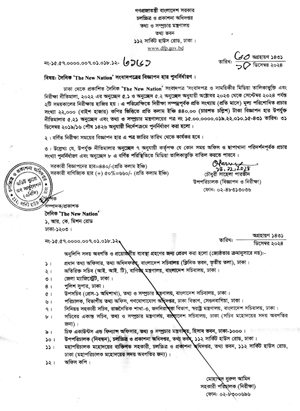Staff Reporter :
Bangladesh faces a growing challenge as food inflation surges to a five-month high of 10.22 percent in April.
This relentless rise in food prices pinches the pockets of ordinary citizens, particularly those who dedicate a significant portion of their income to feeding their families.
While overall inflation witnessed a slight dip to 9.74 percent in April from 9.87 percent in March, it remains stubbornly above 9 percent for the 14th consecutive month, dating back to March 2023.
The Bangladesh Bureau of Statistics (BBS) recently released data highlighting a decrease in non-food inflation to 9.34 percent from 9.64 percent in March.
However, food inflation paints a bleaker picture, surging to 10.22 percent , a 35 basis point increase from the previous month.
A critical concern is the 27-month trend of wage growth lagging behind inflation. This persistent gap reflects a worsening poverty situation as people struggle to maintain their standard of living due to declining real income.
The latest BBS report offers a glimmer of hope with a marginal increase in monthly wage growth to 7.85 percent in April, compared to 7.80 percent in March. Nevertheless, the gap remains a significant hurdle.
With consumption growth slowing down and a rising population, the World Bank’s Macro Poverty Outlook (MPO) 2023 projects a grim scenario. Nearly half a million Bangladeshis could be pushed into extreme poverty (living on less than $2.15 per day) between fiscal years 2023 and 2024.
Meanwhile, bring down the runaway inflation the Bangladesh Bank has been following a contractionary policy stance in its efforts to reduce demand and contain prices. It has raised the policy rate for several times since May 2022 to increase the cost of money.
The policy rate, the rate at which the central bank lends to financial institutions, was the ninth straight spike since the tightening cycle began in May 2022, as inflation showed no signs of cooling.
Additionally, the local currency (BDT) lost its value by 36 percent against dollar in the last two years, led to an increase in the dollar rate from Tk86.45 to Tk117 which further propelled the commodity price squeezing poor, low-income group.


